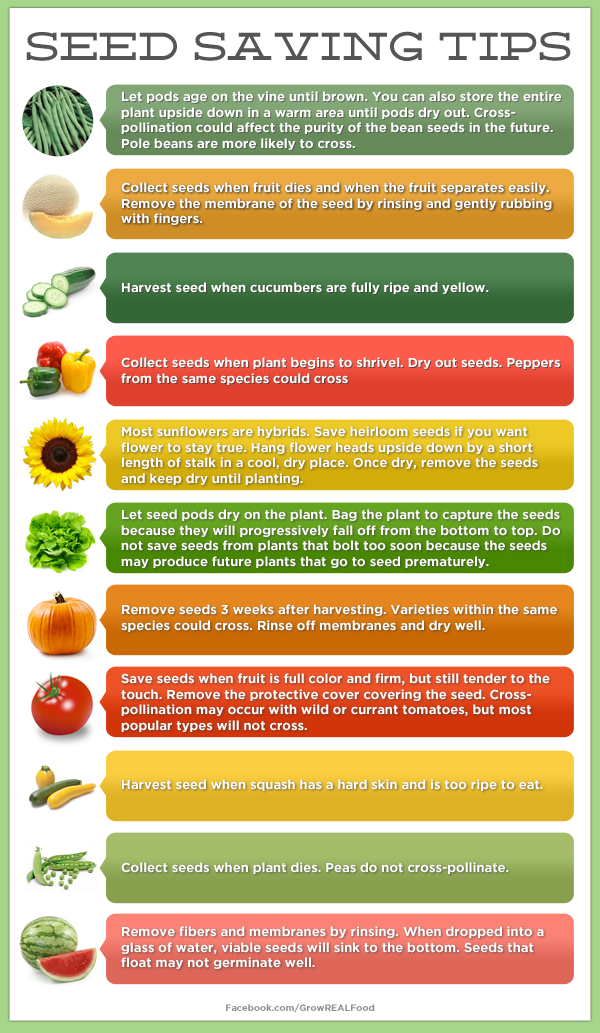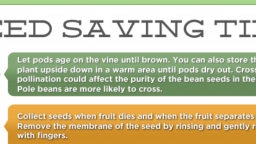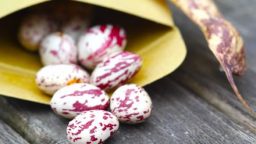Seed saving is one of the most important skills to have for self-reliance. If done properly, one packet of seeds could last for generations. One of the biggest reasons to seed save is that if you choose the seeds from a healthy, productive plant, is that you are choosing the plant with the genes that will thrive in your particular environment, and, over time, it will become perfect for your gardening zone. “Heirloom” seeds are seeds that have been collected and re-planted each year by farmers for generations, and ideally you could create your own!
Not every seed will be easily saved in the same way, so this handy infographic gives some tips for common fruits and vegetables that have relatively easy-to-save seeds. When you plant a crop of any of these plants next year, remember to choose seeds from the healthiest, most prolific plant, that was undisturbed by pests or disease. This plant will have the strongest genes, and genes ideal for surviving and thriving in your climate. Have you ever tried to save your own seeds? Share below!

If you liked this, you might also enjoy…
What Are the Signs of the End Times?
Learn Natural Healing Secrets From the Masters
Preparing for the Bubble to Burst

